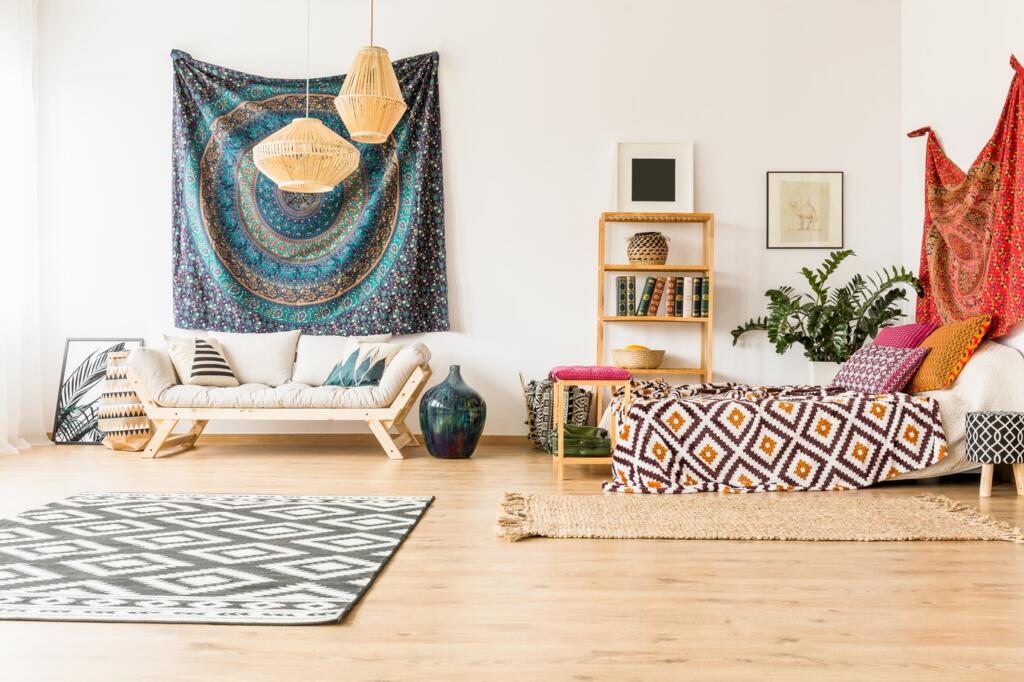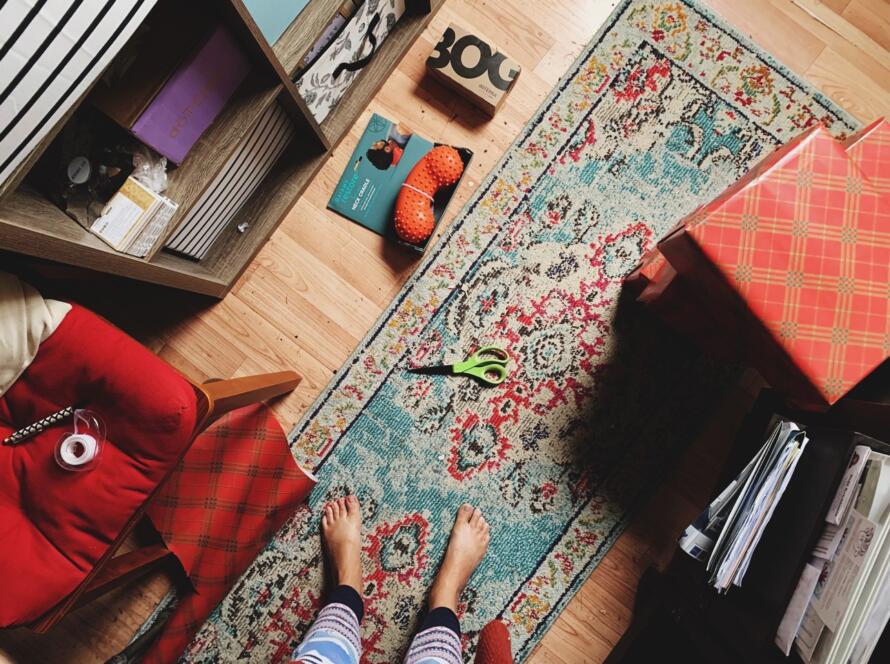What is the Best Grade of Carpet for Home and Office Use? A Comprehensive Guide
Choosing the right carpet for home and office use can significantly impact both comfort and durability. The best grade of carpet is typically one with a pile rating of at least 40 ounces per square yard, as it strikes a balance between resilience and softness. This quality ensures that the carpet can handle high foot traffic while still providing a pleasant underfoot feel.
When selecting carpet, one should consider factors such as material, pile type, and intended use. For residential settings, a nylon or polyester carpet often works best due to their stain resistance and easy maintenance. In contrast, commercial spaces may benefit from commercial-grade carpets designed specifically for heavy wear and tear.
Ultimately, understanding the specifics of carpet grades helps in making informed decisions. Buyers can feel confident that their choice will meet both aesthetic and practical needs in any environment.
Understanding Carpet Grades
Carpet grades indicate the durability and quality of carpets, influencing their suitability for home and office use. Key factors include durability metrics and the types of fibers used, both of which affect lifespan and performance.
Carpet Durability and Quality Metrics
Carpet durability is primarily assessed through various metrics such as face weight and tuft twist. Face weight, measured in ounces per square yard, often indicates density. Higher face weight generally correlates with increased durability.
Tuft twist refers to how many times the fiber is twisted. More twists usually enhance durability and resilience.
Other important metrics include static resistance and stain resistance. These factors help determine how well the carpet will withstand everyday wear and maintenance over the years. High-quality carpets can last anywhere from 10 to 20 years, while lower grades may require replacement within 5 to 7 years.
Types of Carpet Fibers
The type of fiber used in carpet construction plays a significant role in its durability and feel. Common fiber types include nylon, polyester, olefin, and wool.
- Nylon is known for its robust durability and resistance to wear, making it suitable for high-traffic areas.
- Polyester offers vibrant colors and is budget-friendly but may lack the same durability as nylon.
- Olefin is moisture-resistant and ideal for indoor/outdoor use.
- Wool is a natural fiber that provides luxury and comfort but comes with a higher cost.
Choosing the right fiber impacts the longevity of the carpet. High-quality nylon carpets tend to last the longest, often exceeding 20 years with proper care, while polyester options might last around 5 to 10 years. Selecting the right fiber for specific environments is crucial for maintaining the carpet’s lifespan.
Selecting the Right Best Grade Carpet
Choosing the appropriate carpet involves considering specific needs for different environments. Factors such as durability, comfort, and style play significant roles in the selection process.
Carpet for Home Use
For residential spaces, the carpet should combine aesthetics with comfort. Nylon and polyester fibers are popular choices due to their softness and versatility.
- Tufted rugs are particularly favored in homes for their plush texture, making them soft underfoot.
- When selecting a rug for a living room, size is crucial. A common recommendation is to choose a rug that extends at least 18 inches beyond the seating area to create a cohesive look.
Density is another important factor. A denser carpet often lasts longer and provides better insulation and sound absorption.
Carpet for Office Use
In an office setting, durability and maintenance take precedence. Carpets made of looped fibers, like commercial-grade nylon, are ideal. They resist wear and tear, making them suitable for high-traffic areas.
- It is common for office carpets to come in tile form, allowing for easy replacement of damaged sections.
- Color and texture also matter. Neutral colors can enhance focus while adding a professional appearance.
Office carpets should also be stain-resistant to maintain professionalism. Carpet tiles are typically 18”x18” or 24”x24”, providing flexibility in design and layout.
Carpet Designs and Trends
Current carpet designs emphasize functionality while embracing aesthetic appeal. Trends for 2024 reflect a blend of modern styles and classic patterns, catering to diverse preferences in both homes and offices.
Varieties of Carpet Design 2024
In 2024, various carpet designs capture attention with distinct characteristics.
- Textured Carpets: These add depth to interiors with their intricate patterns. Options range from looped textures to plush piles.
- Geometric Patterns: Bold shapes in carpets create visual interest, making them suitable for contemporary spaces.
- Nature-Inspired Designs: Floral and leaf patterns offer a connection to the outdoors, ideal for creating a calming atmosphere.
- Neutral Colors: Beige, gray, and taupe remain popular choices, providing versatility and ease in matching furniture. They work well in both professional and residential settings.
These varieties allow buyers to select carpets that not only fit their style but also enhance the functionality of their spaces.
Trending Rugs 2024
Rug trends in 2024 highlight innovation and unique artistry.
- Eco-Friendly Materials: Sustainable options are on the rise, utilizing recycled or natural fibers. Choices like jute, sisal, and organic cotton are increasingly favored.
- Vintage Styles: Rugs with a distressed or antique look continue to attract buyers. These pieces add character and warmth to any room.
- Bold Colors: Vibrant hues, such as deep blues and rich reds, are being embraced. These rugs serve as statement pieces, adding a pop of color to neutral spaces.
- Layering Techniques: Combining different rugs creates a visually appealing effect. This trend allows for personal expression and texture variation.
These trends indicate a shift towards individuality in decor, reflecting the personal tastes of consumers.
Manufacturers and Wholesalers
The carpet industry comprises various manufacturers and wholesalers who cater to both residential and commercial needs. Specific manufacturers excel in specialized carpet types, ensuring quality and suitable options for diverse applications.
Hotel Carpet Manufacturer
Shivalika Rugs is a key player in the hotel carpet manufacturing sector. It focuses on creating durable and aesthetically appealing carpets that meet the unique demands of hotel environments. These carpets are designed with heavy foot traffic in mind, ensuring longevity and minimal maintenance.
The range includes options like commercial-grade carpets, which are stain-resistant and easy to clean. This is crucial for maintaining a welcoming atmosphere in hotels. Their carpets often feature custom designs tailored to a hotel’s branding, enhancing the overall guest experience.
Carpet Wholesaler in India
Shivalika Rugs also stands out as a significant carpet wholesaler in India. They provide a wide selection of carpets at competitive prices, allowing retailers to stock quality products without high overhead costs.
Their catalog encompasses various materials, styles, and colors to suit different consumer preferences. Shivalika’s efficient supply chain ensures timely delivery, which is vital for retailers looking to meet customer demand. This wholesaler emphasizes relationship-building with clients, often providing support in marketing and product selection.
Washable Rugs Manufacturer
In the realm of washable rugs, Shivalika Rugs offers innovative solutions suitable for home and office use. These rugs combine practicality with style, featuring materials that are easy to clean and maintain.
Their washable rugs are crafted with stain-resistant fabrics designed for high usability, making them ideal for homes with children or pets. This focus on functionality does not compromise aesthetics, as they boast a variety of colors and patterns, appealing to a broad audience.
PVC Floor Carpet Manufacturer
PVC floor carpets are another specialization of Shivalika Rugs. These carpets are valued for their durability and ease of maintenance. They are particularly popular in commercial settings such as offices, retail spaces, and hospitality venues.
Shivalika emphasizes the importance of eco-friendly manufacturing processes, ensuring that their PVC carpets are safe and sustainable. Additionally, these carpets are available in multiple designs and textures, catering to different decor styles while providing a cost-effective flooring solution.
Faux Fur Rugs Manufacturer & Wholesaler
Faux fur rugs from Shivalika Rugs offer luxury at an accessible price. These rugs are fashioned to provide the plush feel of real fur while ensuring ethical manufacturing practices.
Targeted towards both residential and commercial markets, these rugs are favored for their comfort and visual appeal. Shivalika provides a range of sizes, colors, and styles, making it easy for consumers to find a faux fur rug that fits their decor theme. Their commitment to quality ensures these products maintain their beauty over time.
Sustainability and Maintenance
Choosing the right carpet involves considering sustainability and maintenance. Many options today prioritize eco-friendliness, while proper care can extend the carpet’s lifespan.
Eco-Friendly and Sustainable Options
Eco-friendly carpets are increasingly popular. They are made from renewable resources like wool, sisal, or recycled materials. Look for carpets that have certifications such as Cradle to Cradle or Green Label Plus, indicating low emissions and sustainable production practices.
Benefits of eco-friendly carpets include:
- Reduced environmental impact
- Non-toxic materials for healthier indoor air quality
- Recyclability at the end of their life cycle
Choosing sustainable options not only benefits the environment but also supports healthier living spaces.

Maintenance and Care Tips
Proper maintenance extends the life of carpets and preserves their appearance. Regular vacuuming is crucial; aim for at least once a week to remove dirt and allergens. Additionally, spot-clean spills promptly to prevent stains.
Key maintenance tips include:
- Use a professional cleaning service every 12-18 months.
- Implement a no-shoe policy in the home or office to reduce dirt.
- Rotate furniture to prevent wear patterns.
Lastly, using rug pads can help prevent slipping and protect the carpet from wear under furniture. These practices ensure that carpets remain in optimal condition for years.
The Importance of Quality
Quality is crucial when selecting carpets for home and office use. High-grade carpets offer durability, comfort, and aesthetic appeal, enhancing the overall environment. Understanding how to identify and source quality carpets can lead to informed purchasing decisions.
Advantages of High-Grade Carpets
High-grade carpets provide several benefits. They typically use superior materials, resulting in increased durability and a longer lifespan. This durability translates into cost savings over time, as they require fewer replacements or repairs.
Comfort is another key advantage. High-quality carpets often provide a softer underfoot feel, which contributes to a more enjoyable experience in both domestic and professional spaces. Additionally, better insulation properties can keep spaces warmer in winter and cooler in summer, enhancing energy efficiency.
Aesthetically, high-grade carpets maintain their appearance longer, resisting stains and fading. The investment in quality often pays off in enhanced home or office appeal, contributing to a more professional image in work settings.
Identifying and Sourcing Quality
Identifying quality carpets requires attention to specific details. Factors such as fiber type, density, and pile height are essential. Wool and nylon are preferred fibers due to their durability. Density can be assessed by pressing down on the carpet. If it recovers quickly, it usually indicates high quality.
Sourcing quality involves purchasing from reputable suppliers. Look for brands with established histories and positive reviews. Online resources and customer feedback can also guide decisions. Checking certifications and standards for environmental sustainability may ensure a responsible purchase, benefiting both the buyer and the planet.
The Case for Hand-Knotted Carpets
Hand-knotted carpets are often regarded as the epitome of carpet quality. The craftsmanship involved in creating these carpets offers unmatched durability. Each piece is unique, resulting in a distinct character for any room.
Investing in a hand-knotted carpet can yield long-term benefits. Unlike machine-made options, they can appreciate over time, adding value to a home. The knotting technique typically involves high-quality materials, ensuring a rich texture and vibrant colors.
Moreover, hand-knotted carpets come with various designs and patterns, catering to diverse tastes. This versatility allows them to fit into any decor style, from contemporary to traditional. Their longevity combined with unique artistry makes them a wise choice for discerning consumers.



